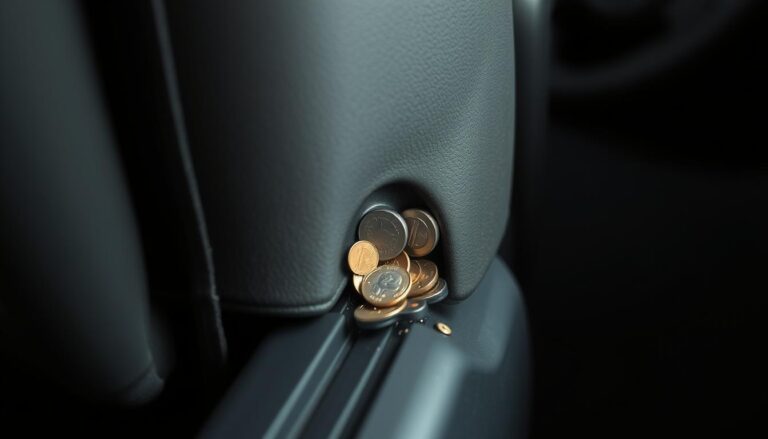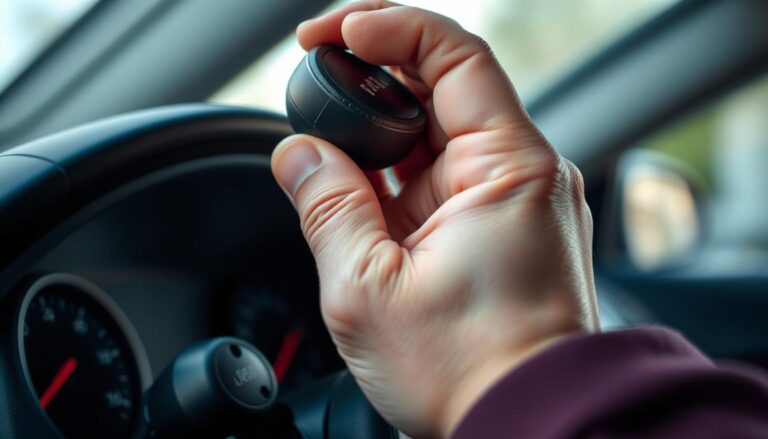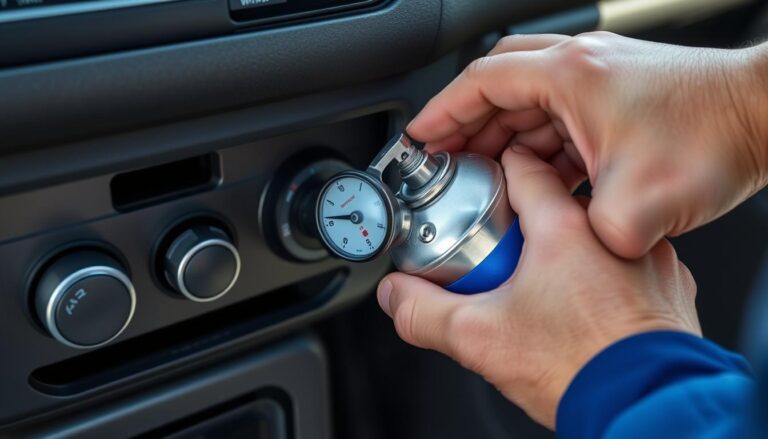A jammed staple gun can quickly halt your project and cause unnecessary frustration. Whether you’re in the middle of upholstering furniture, installing insulation, or tackling a crafting project, knowing how to unjam a staple gun is an essential skill for any DIY enthusiast. The good news is that most staple gun jams can be resolved quickly with the right approach and a few basic tools.
This comprehensive guide will walk you through the process of safely and effectively unjamming different types of staple guns to get you back to work in no time.
Safety Precautions Before You Begin
Always prioritize safety when working with staple guns. These tools can cause serious injury if handled improperly, especially when attempting to clear jams.
Essential safety equipment when working with staple guns
- Disconnect electric staple guns from power sources before attempting any repairs
- Release pressure from pneumatic staple guns by disconnecting the air supply
- Wear protective gloves to prevent cuts from sharp staples
- Use safety glasses to protect your eyes from flying staples or metal fragments
- Work in a well-lit area to clearly see the internal components
- Keep the staple gun pointed away from yourself and others at all times
- Never attempt to fire a jammed staple gun
Tools Needed to Unjam a Staple Gun

Essential Tools
- Needle-nose pliers for gripping and removing jammed staples
- Flathead screwdriver for prying and disassembly
- Phillips screwdriver for removing screws on some models
- Small brush for cleaning debris
- Protective gloves to prevent injuries
Optional Tools
- Magnifying glass for better visibility of small parts
- Compressed air can for blowing out debris
- Light machine oil or lubricant spray
- Small container to hold screws and small parts
- Work light for better visibility
How to Unjam a Manual Staple Gun
Manual staple guns are the most common type found in homes. They rely on mechanical force to drive staples and can develop jams when staples are loaded incorrectly or debris builds up in the mechanism.

Key components of a manual staple gun
Step-by-Step Process
-
Ensure the staple gun is safe to handle
Hold the staple gun with the nose pointing away from you and others. Make sure the handle is not compressed.
-
Remove the pusher rod
Locate the knob or tab at the bottom of the staple gun that connects to the pusher rod. This rod runs the length of the magazine and pushes staples into the firing chamber. Grasp it firmly and pull to slide it out, then set it aside.
-
Unscrew and remove the magazine
Use a screwdriver to remove the screw at the bottom of the stapler. Once the screw is out, carefully extract the staple gun’s magazine. It should slide out smoothly without resistance.

-
Clear the jam with needle-nose pliers
Examine the top section of the stapler where staples are discharged. Use needle-nose pliers to carefully grip the jammed staple and pull it toward you, removing it from the stapler’s nose.
-
Check for additional staples or debris
Inspect the magazine and firing mechanism for any remaining staples or debris that might cause future jams. Remove anything you find.
-
Reassemble the staple gun
Reinsert the magazine into the staple gun body. Replace and tighten the screw. Slide the pusher rod back into position.
-
Test the staple gun
Load a few staples and test the gun on a scrap piece of wood to ensure it’s working properly.

Always test your staple gun on scrap material after clearing a jam
How to Unjam an Electric Staple Gun
Electric staple guns offer convenience and power but can be more complex to unjam. Follow these steps carefully to avoid damaging the electrical components.
Important: Always unplug electric staple guns before attempting any repairs or maintenance to prevent accidental discharge or electrical shock.

Always unplug electric staple guns before attempting repairs
Step-by-Step Process
-
Unplug the staple gun
Ensure the staple gun is disconnected from any power source before beginning work.
-
Locate and release the magazine
Find the release lever at the bottom of the staple gun. Pull on this lever to unclip the magazine, then carefully pull the magazine out of the gun.

-
Remove jammed staples from the magazine
Inspect the magazine for jammed staples. If staples are crushed or misaligned, use needle-nose pliers to carefully remove them. Be gentle to avoid damaging the magazine.
-
Check the discharge area
Examine the discharge area where staples exit the gun. Look for staples that may be stuck in this area but not in the magazine. Use needle-nose pliers to carefully extract any jammed staples.

-
Clean the internal components
Use a small brush to gently clean any debris or staple fragments from the internal components. Be careful not to damage any electrical parts.
-
Reassemble the staple gun
Slide the magazine back into the staple gun until it clicks into place. Ensure it’s properly seated and locked.
-
Test the staple gun
Plug in the staple gun and test it on a scrap piece of material to ensure it’s functioning correctly.
Recommended Maintenance Product
Keep your electric staple gun in top condition with regular maintenance. A quality lubricant spray can prevent jams and extend the life of your tool.

How to Unjam a Pneumatic Staple Gun
Pneumatic staple guns use compressed air to drive staples and are common in professional settings. Their powerful operation means jams need to be addressed carefully.
Caution: Always disconnect the air supply before attempting to unjam a pneumatic staple gun. The compressed air can cause the gun to fire unexpectedly.

Always disconnect the air supply before servicing pneumatic tools
Step-by-Step Process
-
Disconnect the air supply
Remove the air hose from the staple gun to ensure no compressed air can activate the tool during maintenance.
-
Release any remaining pressure
Point the staple gun in a safe direction and squeeze the trigger to release any compressed air that may remain in the tool.
-
Open the magazine
Locate the magazine release mechanism, which varies by model. Some use a latch or button, while others may require sliding a component. Refer to your owner’s manual if you’re unsure.

-
Remove jammed staples
Carefully inspect the magazine and firing mechanism for jammed staples. Use needle-nose pliers to extract any staples that are bent, misaligned, or stuck.
-
Check the driver blade
The driver blade is the component that pushes staples out of the gun. Ensure it moves freely and isn’t bent or damaged. If it’s stuck in the down position, carefully use pliers to return it to the up position.

The driver blade is a critical component that must move freely
-
Clean the nose and feed path
Use a small brush to clean any debris from the nose of the staple gun and the feed path where staples travel. This helps prevent future jams.
-
Reassemble and test
Close the magazine, ensuring it locks securely. Reconnect the air supply and test the staple gun on scrap material to verify it’s working properly.
Troubleshooting Persistent Staple Gun Jams
If your staple gun continues to jam after following the basic unjamming procedures, consider these troubleshooting tips to identify and resolve the underlying issues.

Common Causes of Persistent Jams
- Using the wrong staple size – Verify you’re using the correct staple size recommended for your specific staple gun model
- Firing too quickly – Rapid firing can cause staples to stack and jam
- Worn or damaged parts – Springs, driver blades, and other components can wear out over time
- Dirt and debris buildup – Regular cleaning is essential for smooth operation
- Improper staple loading – Staples must be loaded with the sharp edges pointing in the correct direction
Advanced Troubleshooting Steps
- Inspect the spring tension – Weak springs may not provide enough force to drive staples properly
- Check for bent components – Bent driver blades or feed mechanisms can cause recurring jams
- Examine for excessive wear – Look for worn surfaces where staples travel through the gun
- Verify proper lubrication – Moving parts should be lightly lubricated for smooth operation
- Consider professional repair – Some issues may require professional servicing
| Problem | Possible Cause | Solution |
| Staples not firing at all | Empty magazine or jammed driver | Reload staples or clear driver path |
| Staples only partially driven | Insufficient power or worn driver | Check power source or replace driver |
| Frequent jamming | Wrong staple size or dirty mechanism | Use correct staples and clean thoroughly |
| Staples bending during firing | Material too hard or driver misaligned | Use appropriate staple size or realign driver |
| Multiple staples firing at once | Damaged magazine or feed mechanism | Repair or replace damaged components |

Using the correct staple size and type is crucial for preventing jams
Preventing Future Staple Gun Jams
Regular maintenance and proper usage can significantly reduce the frequency of staple gun jams. Follow these preventive measures to keep your tool working smoothly.

Regular Maintenance Tips
Cleaning
- Clean your staple gun after every use or at least weekly if used frequently
- Remove all staples before storage
- Use a small brush to remove dust and debris from the magazine and firing mechanism
- Wipe down external surfaces with a clean cloth
- Blow out hard-to-reach areas with compressed air (for pneumatic and electric models)
Lubrication
- Apply a small amount of light machine oil to moving parts
- Focus on the driver blade and spring mechanisms
- Wipe away excess oil to prevent buildup
- Lubricate pneumatic tools with air tool oil specifically designed for this purpose
- Follow manufacturer’s recommendations for lubrication frequency

Always load staples with the sharp edges pointing in the correct direction
Best Practices for Usage
- Use only the staple size and type recommended by the manufacturer
- Avoid rapid firing which can cause staples to stack and jam
- Apply consistent pressure when using manual staple guns
- Hold the staple gun perpendicular to the work surface
- Store your staple gun in a clean, dry place
- Inspect the tool before each use for signs of wear or damage
- Replace worn parts before they cause jams or malfunctions
Pro Tip: Keep a log of maintenance activities and part replacements to track the condition of your staple gun over time. This can help identify recurring issues and determine when it might be more economical to replace the tool rather than continue repairs.
Quality Staples Prevent Jams
Using high-quality staples appropriate for your specific staple gun model can significantly reduce jamming issues. Premium staples have consistent dimensions and better coating for smooth feeding.

Final Checks After Unjamming Your Staple Gun
After successfully unjamming your staple gun, perform these final checks to ensure it’s functioning properly and safe to use.

Always test your staple gun on scrap material before returning to your project
-
Visual inspection
Examine the staple gun for any remaining debris, loose parts, or visible damage. Ensure all components are properly seated and secured.
-
Mechanical check
For manual staple guns, test the handle movement without loading staples. It should move smoothly without catching or sticking.
-
Staple loading test
Load a small number of staples and verify they feed properly into the firing position. The pusher mechanism should advance staples smoothly.
-
Test fire
Test the staple gun on a piece of scrap material similar to your project material. Verify that staples are driven fully and consistently.
-
Multiple test fires
Fire several staples in succession to ensure the gun continues to operate properly without jamming again.
-
Safety check
Ensure all safety mechanisms are functioning correctly. For electric and pneumatic models, verify that trigger safety features work as intended.
Important: If your staple gun continues to jam frequently despite proper maintenance and using the correct staples, it may be time to consider replacing the tool. Continuing to use a malfunctioning staple gun can damage your work materials and potentially cause injury.
Conclusion
Knowing how to unjam a staple gun is an essential skill for anyone who regularly uses these versatile tools. By following the step-by-step procedures outlined in this guide, you can quickly address jams in manual, electric, and pneumatic staple guns to minimize project disruptions.
Remember that prevention is the best approach to staple gun jams. Regular cleaning, proper lubrication, using the correct staples, and following manufacturer guidelines will significantly reduce the likelihood of experiencing jams in the first place.
With proper maintenance and care, your staple gun can provide years of reliable service for all your fastening needs. If you find yourself frequently dealing with jams despite following best practices, it may be time to invest in a higher-quality tool that offers more consistent performance.
Ready to Upgrade Your Stapling Experience?
If you’re tired of dealing with frequent jams and want a more reliable tool, consider upgrading to a professional-grade staple gun. Quality tools mean fewer interruptions and better results for all your projects.

Professional-grade staple guns offer more reliable performance and fewer jams


